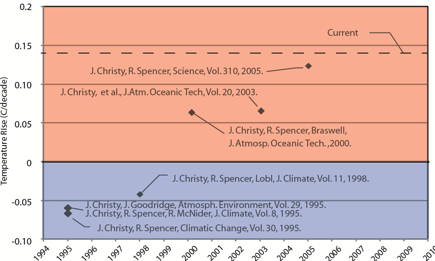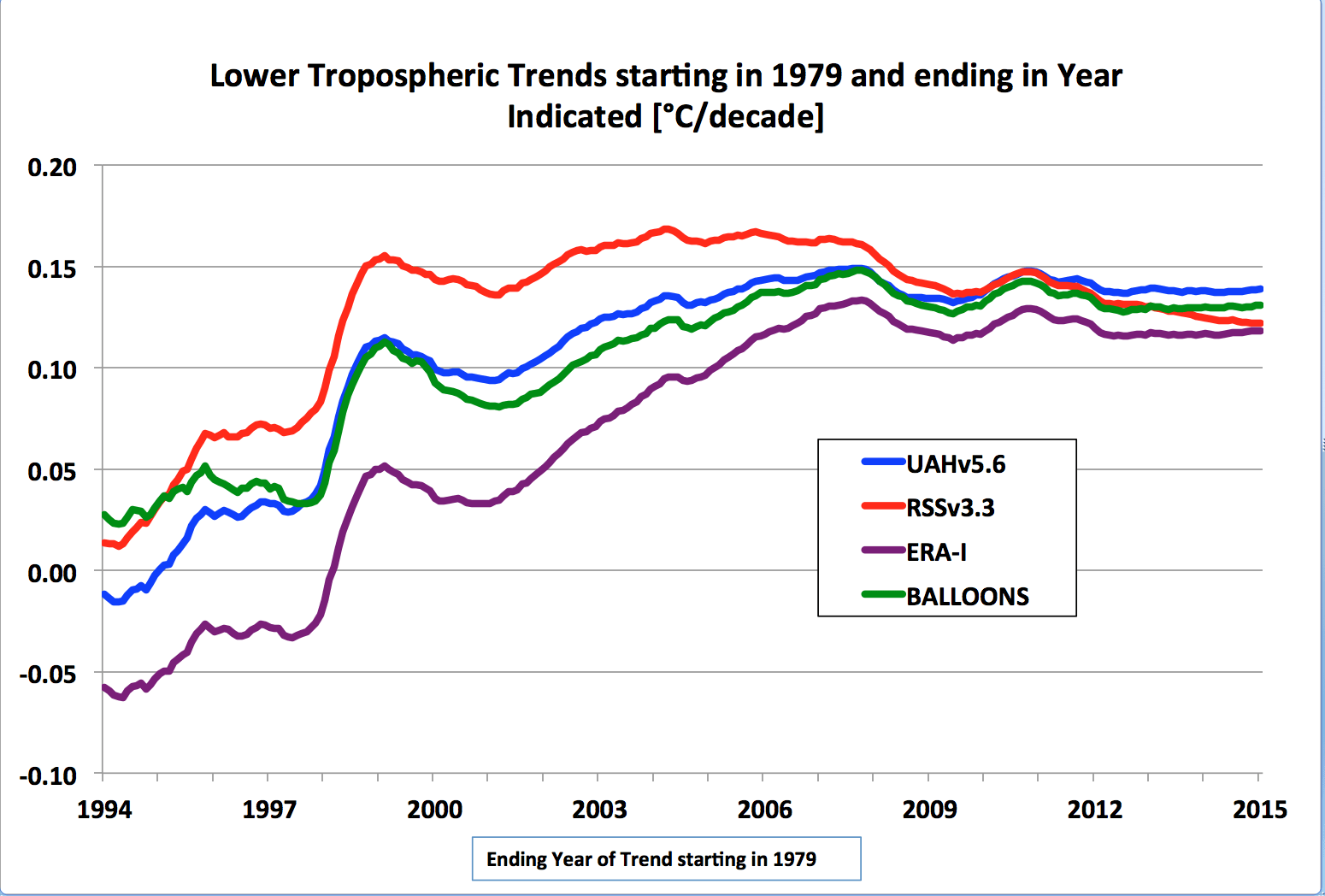That tireless ecological zealot over at The Guardian, Dana Nuccitelli, took the opportunity of our 25th anniversary of satellite-based global temperature monitoring to rip us a new one.
Comparing John Christy and me to “scientists who disputed the links between smoking and cancer”, Dana once again demonstrates his dedication to the highest standards of journalism.
Well done, Grauniad.
I prefer to compare us to Barry Marshall and Robin Warren, who rejected the scientific consensus that peptic ulcers were due to too much stress or spicy food. While they eventually received the Nobel Prize after years of ridicule and scorn from the medical research community, we have no illusions that we will ever be credited for our long-standing position that global warming fears have been overblown. I’m sure the UN’s IPCC will find a way to take credit for that, and get another Peace Prize for it.
(I wonder if Marshall and Warren were being paid off by the spicy food lobby?)
The “97% of all climate scientists agree“ meme that Dana bitterly clings to has been thoroughly discredited…. as if scientific consensus on something so poorly understood as climate change (or stomach ulcers 15 years ago?) really means anything, anyway.
To prove that Dana should probably avoid trying to interpret simple graphs, let’s examine this chart he so likes, which allegedly shows that our (UAH) global temperature dataset has been continually adjusted for errors over the years, resulting in an increasing warming trend:
Now, setting aside the fact that (1) we actually do adjust for obvious, demonstrable errors as soon as they have been found (unlike the IPCC climate modelers who continue to promote demonstrably wrong models), and (2) RSS gets about the same (relatively benign) warming trend as we do, let’s examine some other popular temperature datasets in the same manner as the above graph:
Looks a lot like Dana’s plot, doesn’t it?
Do you want to know why? Is it really because all those other temperature dataset providers were also busily correcting mistakes in their data, too?
No, it’s largely because as the years go by, the global temperature trend changes, silly.
About the only thing Dana got reasonably correct is his article’s tag line, “John Christy and Roy Spencer are pro-fossil fuel and anti-scientific consensus.”
You’re damn right we are. But not because we are paid to say it, which we aren’t. (What are you paid to say for The Guardian, Dana?)
We are pro-fossil fuel because there are no large scale replacements available, wind and solar are too expensive, and you can’t just cut fossil fuel use without causing immense human suffering. Yes, I’ve talked to some of the top economists about it.
And indeed we are “anti-scientific consensus” because the consensus (which mostly just follows the average of the IPCC climate models) has been demonstrated to be wrong.
Finally, if Dana objects to me tiring of being called a “global warming denier” (with the obvious Holocaust connotations) for the last seven eight years and fighting back, read this and then tell me where I am wrong.

 Home/Blog
Home/Blog





